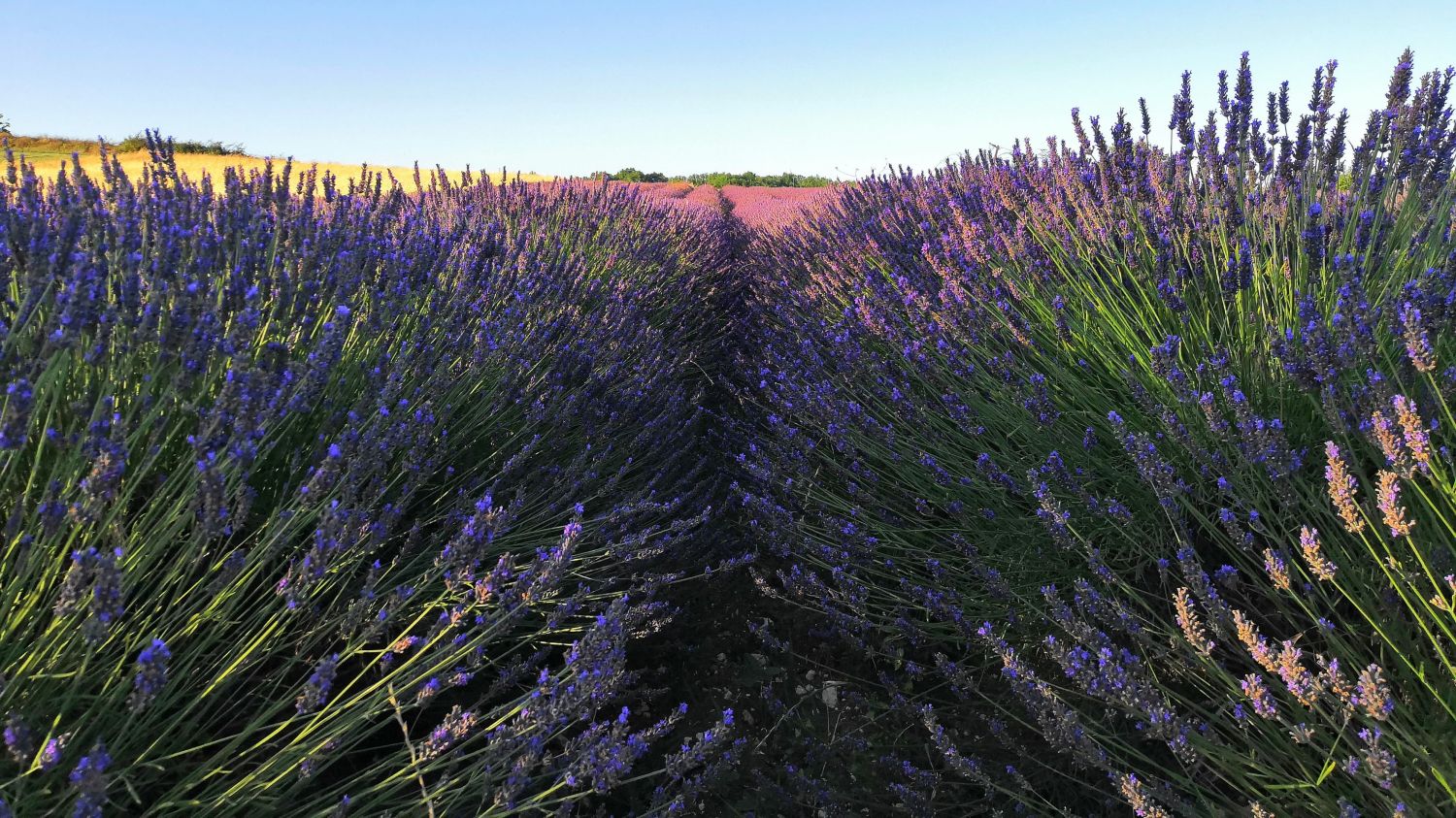Lavandin (Lavandula hybrida)

Botanical Characteristics
- Scientific Name : Lavandula hybrida
- Family : Lamiaceae
- Origin : Natural hybrid between True Lavender (Lavandula angustifolia) and Spike Lavender (Lavandula latifolia)
Description
Lavandin is a natural hybrid resulting from the crossbreeding between True Lavender and Spike Lavender. It is a bushy shrub with narrow, lanceolate, often silver leaves. The compact floral spikes bear flowers of purple, blue, or pink color, emitting an intense and pleasant fragrance.
Climate and Cultivation
- Lavandin thrives in a sunny and dry climate.
- It adapts to various types of well-drained soils.
- Multiplication is done exclusively by cuttings.
- It produces up to 10 times more essential oil.
In Mythology
The name "lavender" and its derivative "lavandin" come from the Latin 'lavare,' meaning to wash; this plant was used since Roman times to perfume laundry and baths. Lavandin is often associated with freshly laundered linen.
Keywords
Freshness, tonicity, lightness
Essential Oil of Lavandin
Origin and Extraction : The essential oil of Lavandin is extracted from the flowering tops of the Lavandin plant (Lavandula hybrida). Lavandin is a natural hybrid resulting from the crossbreeding between True Lavender (Lavandula angustifolia) and Spike Lavender (Lavandula latifolia). Originating from Mediterranean regions, the oil is produced by steam distillation.
Appearance and Fragrance : This essential oil presents with a pale yellow to colorless hue. Its fragrance is intense, floral, and herbaceous, sharing similarities with True Lavender, although noticeably more camphorous.
Chemical Composition : The essential oil of Lavandula hybrida contains components such as linalool, linalyl acetate, camphor, and 1,8 cineole. These elements confer soothing, antibacterial, and antiseptic properties to the oil.
Historical Virtues
The properties of lavandin are similar to lavender in its ability to cleanse and soothe, yet different in its camphorous tonicity. Much more productive than lavender, but less refined, it is especially ideal for toiletry products, soaps, household products, laundry... Used occasionally, it can substitute for lavender.
Note : The essential oil of Lavandin, with its distinctive fragrance and multiple applications, proves to be a versatile option for personal and household well-being and air purification.
Hydrolat of Lavandin
Origin and Production Process : Hydrolat of Lavandin is obtained through steam distillation of the flowering tops of the Lavandin plant, a natural hybrid between True Lavender (Lavandula angustifolia) and Spike Lavender (Lavandula latifolia). This distillation process produces the hydrolat, an aromatic water loaded with volatile and hydrosoluble compounds of the plant.
Appearance and Fragrance : This hydrolat is presented as clear water, slightly tinted with pale blue, with a characteristic lavender scent, but with fresher and more camphorous notes compared to True Lavender hydrolat. Its aroma is both refreshing, tonic, and relaxing.
Historical Virtues
For Consumption : Slightly camphorous and mentholated, it is ideal for infusion or in desserts, pairing well with chocolate, much like lavender.
On the Skin : It is gentle, soothing, moisturizing, and antibacterial. It can be used to cleanse the face, soothe skin irritations, redness, and itching. It can also relieve pain from sunburns or insect bites due to its anti-inflammatory effect.
In the Environment : Sprayed in the air, lavandin hydrolat can create an atmosphere that is both soothing and tonic, promoting emotional well-being.
Laundry : It is perfect for refreshing bedding and ironing.
Note : Hydrolat of Lavandin, with its soothing and refreshing properties, is a versatile product for skincare and well-being rituals, offering a pleasant aromatic experience and a sense of relaxation and freshness.
WARNING
The information on properties, indications, and usage comes from reliable sources in aromatherapy, hydrolatherapy, and phytotherapy, such as specialized books and reputable websites. These data are frequently found in these sources and are often supported by observations in scientific environments. However, it is essential to emphasize that those informations are provided for informational purposes only. It should not be considered as medical advice and cannot engage our responsibility. For any therapeutic use, it is strongly recommended to consult a qualified healthcare professional.